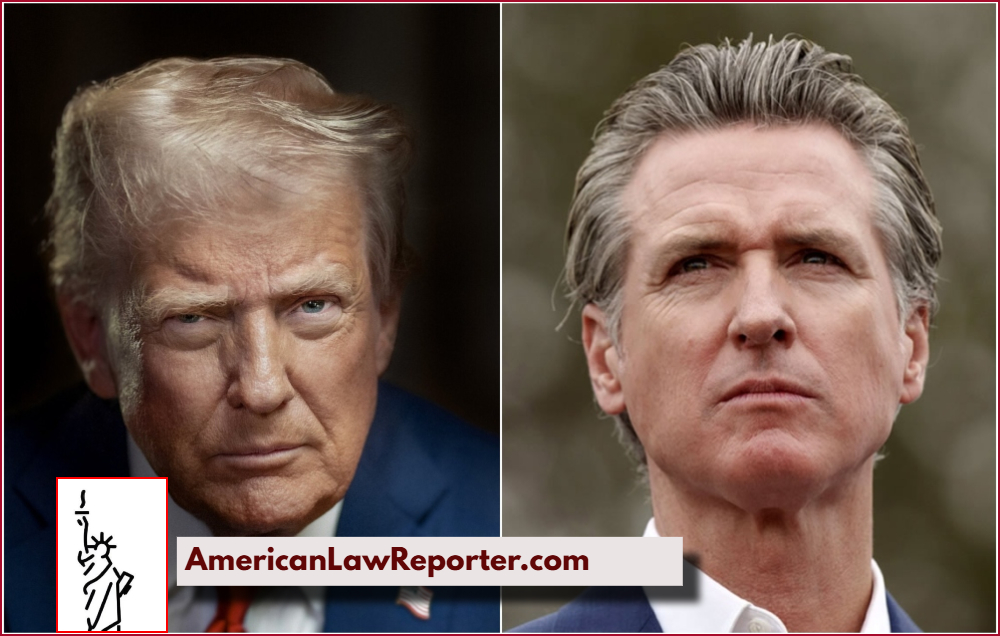Los Angeles streets erupt in chaos as U.S. Marines and National Guard troops mobilize. A bombshell lawsuit. A sitting president threatening to arrest the governor of the nation’s largest state.
The spring of 2025 has unleashed one of the most explosive constitutional crises in modern history—a high-stakes battle between President Donald Trump and California Governor Gavin Newsom over who controls America’s military force on home soil.
As Trump deploys troops to quell immigration protests, Newsom accuses the White House of “dictatorial overreach,” setting up a legal and political firestorm with echoes of Little Rock and Kent State. This is the latest—and perhaps most dramatic—chapter in a long history of presidents and governors clashing over National Guard authority.
Instances where governors or mayors have clashed with sitting U.S. presidents over National Guard deployments are rare but historically significant, often involving issues of federalism, civil rights, or military authority. Here are six historic confrontations that shaped the power struggle between states and the federal government.
1. Little Rock Crisis (1957)
- Parties: Gov. Orval Faubus (D-AR) vs. President Dwight Eisenhower (R)
- Conflict: Faubus used the Arkansas National Guard to block desegregation at Little Rock Central High School. Eisenhower federalized the Guard and sent the 101st Airborne to enforce integration.
- Outcome: Landmark assertion of federal supremacy over states in civil rights.
2. George Wallace Blocks School Integration (1963)
- Parties: Gov. George Wallace (D-AL) vs. President John F. Kennedy (D)
- Conflict: Wallace symbolically stood in a University of Alabama doorway to block Black students, backed by state troops. Kennedy federalized the Alabama Guard to enforce desegregation.
- Outcome: Reinforced federal authority under the Insurrection Act.
3. Kent State Shootings (1970)
- Parties: Gov. Jim Rhodes (R-OH) vs. President Richard Nixon (R)
- Conflict: Rhodes deployed the Ohio National Guard to anti-war protests at Kent State University, leading to four student deaths. Nixon distanced himself but faced backlash for escalating tensions.
- Outcome: Highlighted dangers of militarized responses to civil unrest.
4. Hurricane Katrina (2005)
- Parties: Gov. Kathleen Blanco (D-LA) vs. President George W. Bush (R)
- Conflict: Blanco initially resisted federalizing Louisiana’s Guard, fearing loss of control. Bush pushed for unified command amid chaos.
- Outcome: Prompted reforms to clarify disaster-response chains of command.
5. COVID-19 Mask Mandates (2020)
- Parties: Multiple governors vs. President Donald Trump (R)
- Conflict: Governors like Gavin Newsom (D-CA) deployed Guards for pandemic aid, while Trump threatened to “override” them. No direct troop clashes, but tensions over federalism.
6. Border Deployments (2018–2024)
- Parties: Govs. Greg Abbott (R-TX) & Ron DeSantis (R-FL) vs. Presidents Trump & Biden
- Conflict: Republican governors sent Guardsmen to the border without federal approval, clashing with Biden over immigration enforcement.
- Outcome: Ongoing legal battles over states’ role in national security.
Legal Framework
- Insurrection Act (1807): Lets presidents override governors to deploy troops domestically.
- Posse Comitatus Act (1878): Limits federal military use in law enforcement (except the Guard under state/federal orders).
Key Takeaway
These clashes are rare but explosive, typically involving civil rights, disasters, or partisan divides. The Constitution’s Supremacy Clause usually favors presidential authority, but governors retain broad control over their Guard units unless federalized.

